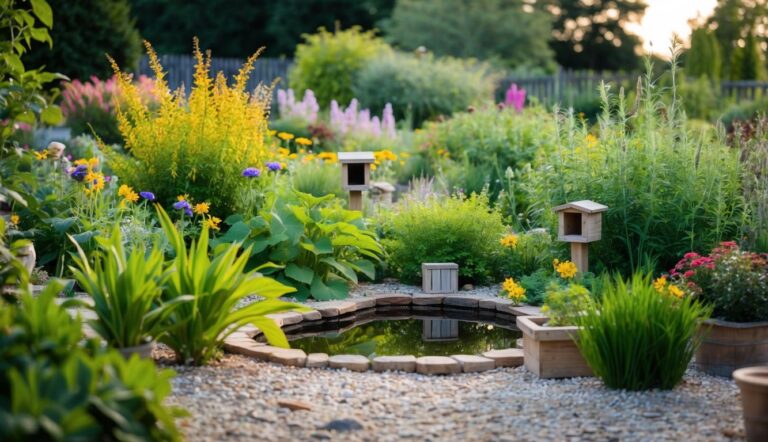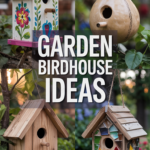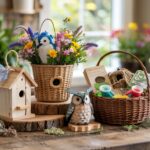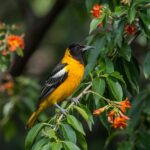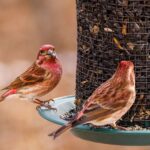Wondering how to enjoy the beauty of birds in your backyard without setting up a single feeder? You’re not alone!
Many bird lovers want to create a welcoming space for their backyard birds without the maintenance that comes with traditional feeders.
Creating a bird-friendly landscape with natural food sources, water features, and protective shelter can attract a diverse array of wild birds to your yard while supporting their natural behaviors.
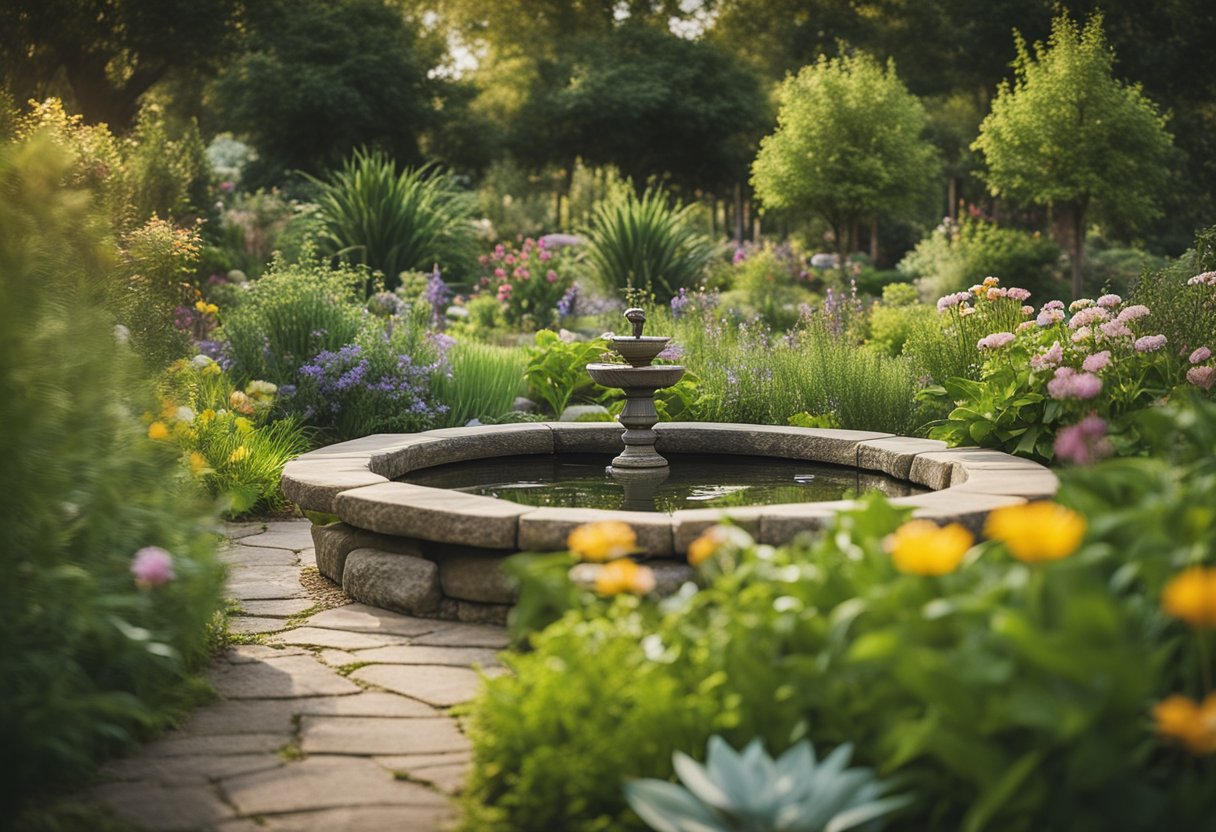
Birds are naturally drawn to environments that mimic their wild habitats. By landscaping with native plants that produce seeds, berries, and nectar, you’ll provide food sources that birds naturally seek out.
Add a simple bird bath or small water feature, and you’ll be amazed at the variety of birds that stop by for a drink or quick splash.
Key Takeaways
- Native plants offer birds natural food and shelter—no feeders needed.
- Water features like bird baths or ponds bring more birds to your yard, fast.
- Leaving some garden areas “messy” with fallen leaves and twigs gives birds nesting materials and encourages them to stick around.
How to Create a Bird-Friendly Habitat Without Feeders

You really don’t need feeders to bring birds to your yard. If you focus on the basics—food, water, and shelter—you’ll see more birds than you might expect.
1. Grow Native Plants That Attract Birds
Native plants are basically bird magnets. They offer natural food sources like berries, seeds, nectar, and plenty of insects for birds to munch on.
Native trees and shrubs are actually the healthiest food source you can offer birds.
Want to attract colorful cardinals? Plant sunflowers, which produce seeds they adore.
Consider creating a varied landscape with:
- Flowering plants (lavender is always a good pick)
- Berry-producing shrubs
- Seed-bearing plants like sunflowers
- Trees that provide fruits and nuts
Fun fact: a single chickadee can need up to 9,000 caterpillars just to raise one brood. When you plant natives that support these insects, you’re basically rolling out the red carpet for birds.
Your local wildlife will appreciate the effort, and you’ll get a front-row seat to the action all year long.
2. Provide Water With a Bird Bath
Water is a must for birds—both for drinking and bathing. A bird bath is one of the easiest ways to make your yard more inviting.
Put it somewhere you can see, but close to shrubs or trees so birds feel safe.
Some quick tips:
- Keep water fresh—dirty water is a no-go for birds.
- Stick to a shallow depth (1-2 inches).
- Drop in a few rocks or pebbles so birds have perches.
- If you can, add a dripper or something to make the water move a bit.
In winter, a heated bird bath can be a real game-changer. When everything else is frozen, birds will flock to your yard for a drink.
Honestly, birds seem to love moving water. Even a cheap solar fountain can make a big difference in how many visitors you get.
3. Add Shelter and Nesting Spaces
Birds need places to hide, sleep, and raise their families. Giving them shelter can really boost your yard’s bird population.
Try a few of these ideas:
- Leave some dead tree limbs (as long as they’re safe) for perching and roosting.
- Put up nesting boxes for birds like bluebirds or wrens.
- Make a small brush pile with fallen branches.
- Plant thick shrubs for extra cover.
Robins like open-cup nests on sheltered ledges, while wrens go for small holes in nesting boxes. It’s worth learning what your local birds prefer.
Don’t worry about keeping everything too tidy. Fallen leaves and twigs are perfect for nests, so leaving a “messy” patch is actually helpful.
Offer Natural Food Sources Year-Round
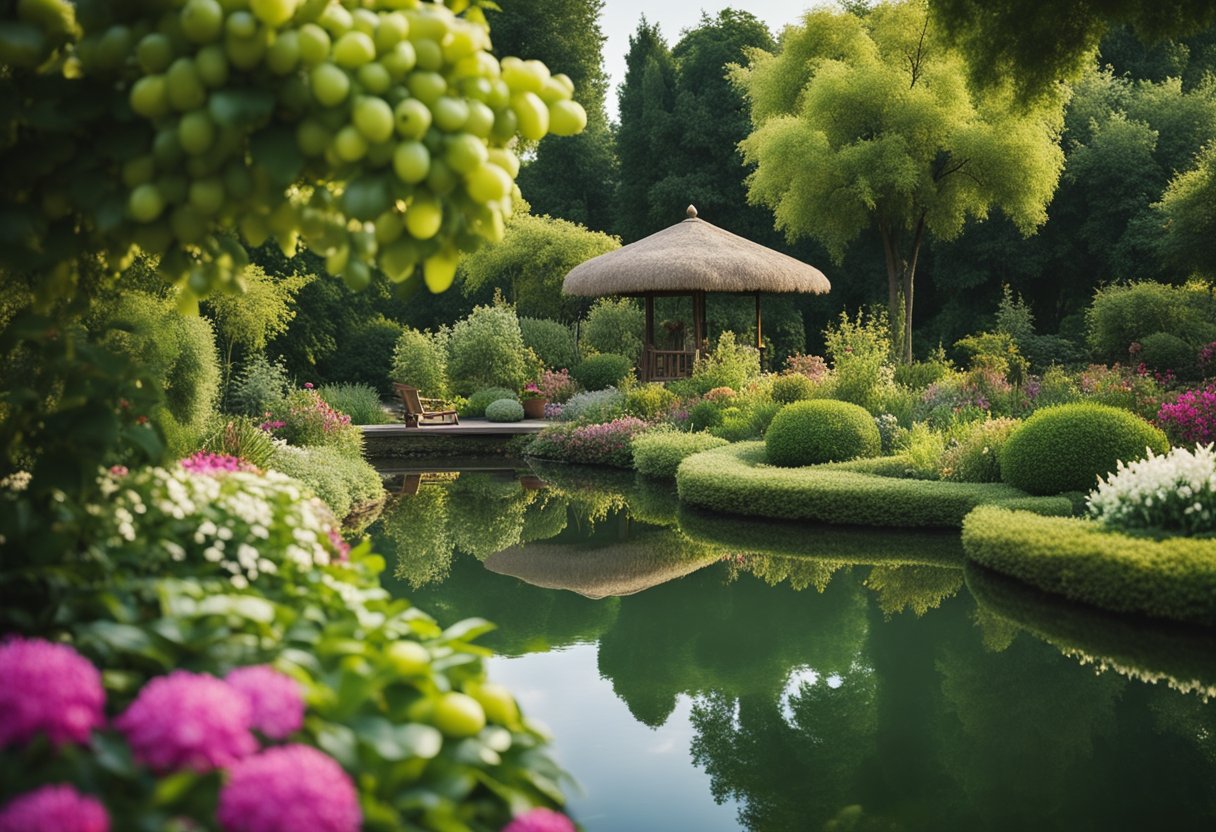
You really don’t need fancy feeders to keep birds coming back. If you offer natural food through all seasons, birds will stick around and thrive.
4. Plant Trees and Shrubs for Nuts, Seeds, and Fruits
If you want to see goldfinches or chickadees, plant trees and shrubs that make food birds actually want. Native species always work best—they’ve evolved right alongside your local birds.
Oaks are especially great, producing acorns for tons of species. Crabapples, serviceberries, and dogwoods make berries that last into winter when food is hard to find.
Sunflowers are a double win—they look good and feed birds like titmice. Some other bird-friendly options:
- Berry bushes: elderberry, holly, viburnum, juniper
- Seed trees: pine, spruce, maple, birch
- Nut trees: hickory, walnut, beech
Try planting in layers—tall trees, mid-height shrubs, ground covers. Even if your yard’s small, you can use dwarf varieties or big pots.
5. Support Healthy Insect Populations
It’s wild, but a chickadee family might need 6,000-9,000 caterpillars just to raise their chicks. Insects are the main protein source for lots of birds, especially during nesting.
If you want robins and woodpeckers, skip the pesticides. Even organic sprays can mess up the bug population birds rely on. Let some leaf litter hang around—it’s a haven for helpful insects.
Native plants attract way more insects than non-natives. Oaks alone support hundreds of caterpillar species!
If you’ve got a dead tree that’s not a hazard, leave it up—it’s prime real estate for insects and woodpeckers. A brush pile can also attract bugs and give ground-feeding birds a hideout.
Water features help, too. They draw in insects, which means more snacks for birds, especially in city areas where natural water is scarce.
6. Grow Flowers and Shrubs for Nectar
If you’re hoping for a visit from ruby-throated hummingbirds, plant flowers rich in nectar. Hummingbirds are the stars, but orioles and warblers like nectar too.
Go for tubular flowers in bright colors—red, orange, pink. Plant them in clusters for better visibility. Some hummingbird favorites:
- Cardinal flower
- Bee balm
- Salvia
- Trumpet vine
- Columbine
For a steady nectar supply, stagger your plantings so something’s always blooming from spring to fall. Early bloomers like columbine are a lifesaver for migrating hummingbirds.
Native wildflowers not only offer nectar but also support the insects birds eat. Plant a mix of natives that bloom at different times to keep the buffet open year-round.
Maximize the Garden Experience for Bird Watching
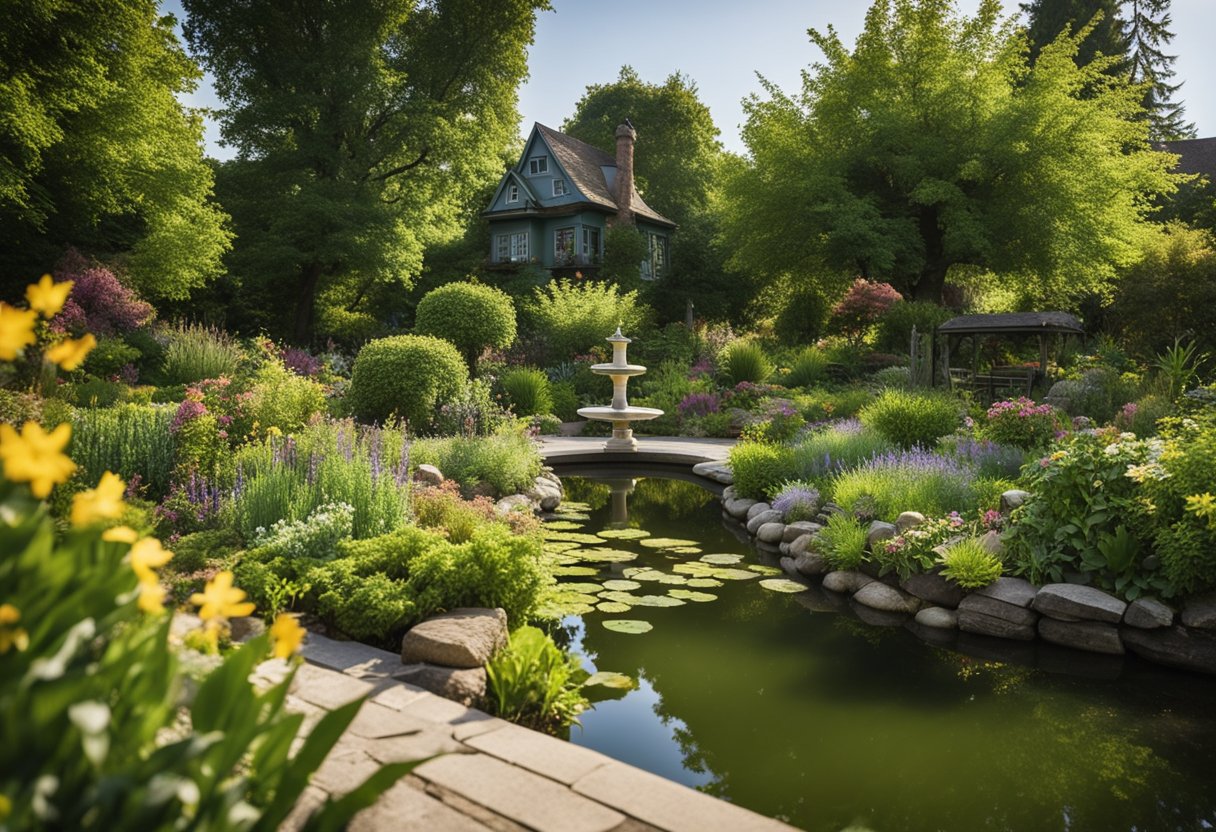
Setting up a comfy spot to watch birds makes the whole garden thing way more fun. You’ll notice more birds—and catch little behaviors you might’ve missed otherwise.
7. Design Inviting Birdwatching Spots
Where you sit actually matters. Pick a cozy chair or bench in a quiet spot with a view of your bird hotspots. If you can, sit with the morning sun behind you—it cuts down on glare and makes birds easier to spot.
Some viewing spot must-haves:
- Weather cover—an awning or pergola means you can birdwatch even in a drizzle
- Stay still—choose a spot where you don’t have to move much, so you don’t scare off the birds
- Blend in—sitting near shrubs helps break up your outline
Keep binoculars and a field guide close. Even a cheap pair of binoculars makes a huge difference. Most people like 8x42s for a good mix of detail and steadiness.
You might want a little table for your coffee, notebook, or phone. Apps like Merlin Bird ID are handy if you’re stumped by a new visitor.
8. Observe Bird Behavior and Species Diversity
Birdwatching isn’t just about counting species—it’s about catching all the weird and wonderful things birds do. Some birds are up at dawn, like cardinals and chickadees. Others, like woodpeckers, might show up later.
Start a simple journal and jot down:
- Which birds you see most
- What time of day they show up
- Any cool behaviors
- How the bird mix changes with the seasons
Watch how birds interact. Do goldfinches eat calmly while wrens dart around? Are your regulars ground feeders, or do you get tree-lovers like bluebirds?
Pay attention to which birds use which parts of your garden. Some stick to the treetops, others hang out in shrubs, and a few just hop along the ground. Knowing this helps you tweak your garden to attract an even bigger mix of birds.
Like It? Pin It!

